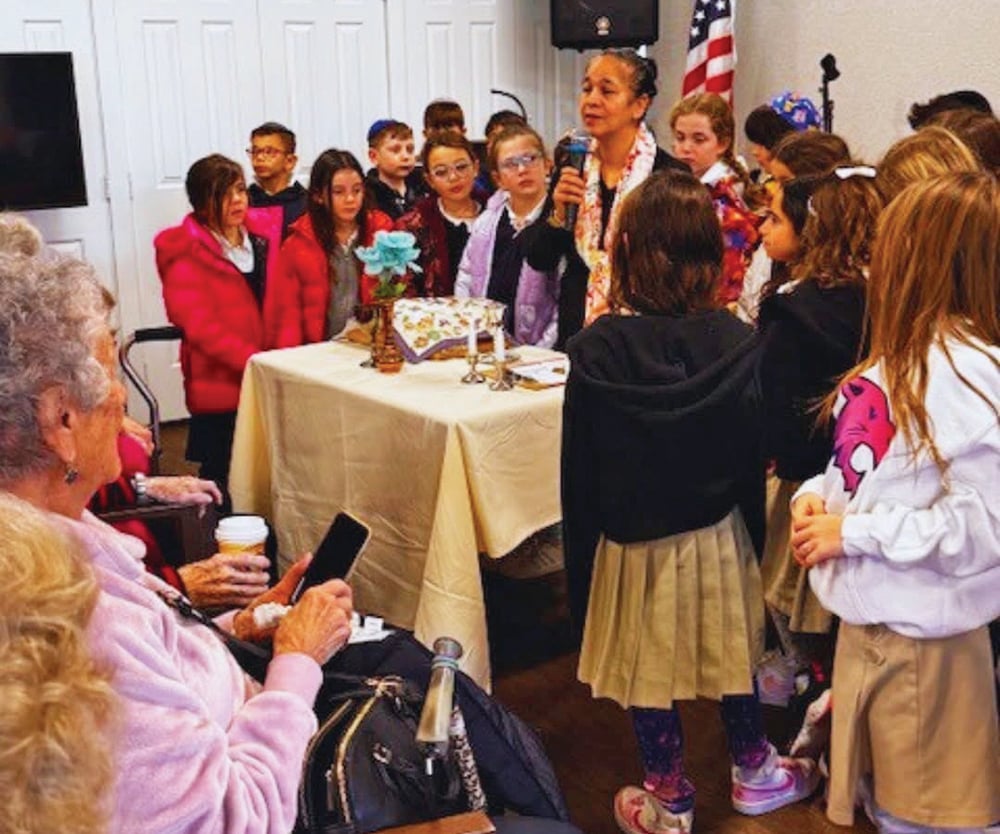With the reading of Parshiyot Matot-Masei last Shabbat, baalei kriah once again faced the annual question of how to properly cantillate a karnei farah. This trope appears but once in the Torah—echoing its infrequency in all of Tanach, where along with its obligatory mesharet, the yerach ben yomo, it is found a total of only 16 times. Twice during the year it is publicly cantillated: Once, as was done last Shabbat in Bamidbar 35-5, and will be revisited in Esther 7-9.
The rarity of the karnei farah has, understandably, bred a lack of familiarity with its proper cantillation. Adding to the quandary is the strong similarity of its pictograph with that of a telisha gedola followed by a telisha ketana. As a consequence, a widespread custom has developed of cantillating the karnei farah as a combination of the two telishot.
Not being an overt halachic matter, and having achieved the gravitas of an established minhag, this custom will undoubtedly continue. Morphing two telishot into a karnei farah does, however, lead us into issues that merit further elucidation:
- Both the karnei farah and telisha gedola are disjunctive tropes (mafsikim) that separate words into distinct phrases.
The telisha ketana, in contrast, is a mesharet, a conjunctive trope that creates phrases by joining words together.
Uniting the telishot as one, therefore, would make the karnei farah both a disjunctive and conjunctive trope. Though, at times, a single trope may indeed “flip” from one function to the other, it will not do so at the same time in the same word.
Though at present, pictographically, the karnei farah and the combined telishot are identical, this was not true in early manuscripts. The karnei farah was originally drawn as a “V”—schematically representing “the horns of an ox,” from whence its name (!). Only later was a small circle affixed to the top of each of the limbs of the V, and the vertex of the V eliminated—thus creating two separate diagonals and giving it the configuration with which we are familiar.
Like most other trope, the karnei farah is placed with the vowel-pointed letter of the accented syllable—in contrast to the telishot (and, parenthetically, the pashta zarka and segol), which are permanently affixed either to the beginnings or endings of words.
That the telishot are positioned without concern for accent takes us back to their origins as identical circles. In order to differentiate one from the other, and in order to avoid added confusion with the unrelated reference symbol to the masora ketana (also a small circle), the telisha gedola was placed on the right margin of the first letter of the word, and the telisha ketana was entered on the left margin of the final letter of the word—irrespective of the accenting of the word.
Only later was another differential added—a diagonal line pointing downward to the left, on the telisha gedola, and one pointed downward to the right, on the telisha ketana—thus giving them the configurations with which we are familiar.
More recently, because of persistent confusion regarding proper accenting, accessory telishot were placed over the vowel-bearing letter of the accented syllable. It is only in these “two-Telishot” editions that one will ever encounter a telisha in the middle of a word. This is in contrast to the karnei farah, which will universally be found in the middle of a word, and never on its outer margins.
Though in the Ashkenazic world it is popularly known as karnei farah (as in the title of this article!), in scholarly tracts it also goes by one other name as well: pazer gadol. Reflective of this is its grammatical role as a disjunctive trope, considered to be identical to that of its “smaller” namesake, pazer (“katan”). Why 16 times in Tanach the pazer (“katan”) gives way to the pazer gadol remains an enigma.
The existence of two versions of a pazer, one “katan” and one gadol, calls to mind similar pairings encountered in trope and in dikduk—prime examples being the already discussed telisha gedola and ketana, and add to that the zakef gadol and katan, and the kamatz gadol and katan.
In these other pairings, there are strong similarities pictographically between their respective versions: The telishot, as already noted, are mirror images of each other; both zekeifim have two vertically aligned dots—with a vertical line having been added to the zakef gadol, and the two kematzim are either very similar or absolutely identical.
This pattern should, therefore, apply to the two pezeirim—and if one refers back to the original symbol of the pazer gadol/karnei farah, it in fact does! For it was, as we noted, in the shape of the letter V—which is a virtual analogue of (and in several alphabets the same as) the configuration of the letter U—which is the shape of the symbol of the pazer (“katan”)!
Does sharing of a name also translate itself into similarity in cantillation? It in fact does so in an alternate cantillation of the karnei farah found in the Eastern Ashkenazic rite (nusach Polin)—one that begins with the motif of a pazer (“katan”) and then followed by that of a telisha gedola. Note that the telisha ketana is totally out of the picture, so there is no longer an issue of a trope being simultaneously both conjunctive and disjunctive.
We might first be tempted to relate to the combining of a telisha gedola motif with that of a pazer (“katan”) as a later minhag, adopted only after the karnei farah and telisha gedola had evolved into their similar pictographic representations. Prior to that, when the karnei farah was a V and the telisha gedola a circle, why would they be joined in cantillation?
Study of the published music of the Eastern Ashkenazic rite (example of which may be found in Encyclopedia Judaica v.11-1106), however, strongly suggests that combining a pazer motif with that of a telisha gedola predates the change in pictographic representation. This may be inferred by taking “note” of the strong similarities between the motifs of four different tropes: the shalshelet, pazer (“katan”), karnei farah and telisha gedola.
The cantillation of the shalshelet provides a good case in point. Though popularly rendered as three identical pazer (“katan”) motifs, the published music is more nuanced. The first two motifs are indeed identical and rendered as abridged and sped-up pazer (“katan”) motifs. The third motif, however, breaks the pattern. It has moved slightly away from the pazer (“katan”) motif and is now closer to that of a telisha gedola.
The karnei farah, reflecting the aforementioned Eastern Ashkenazic alternate cantillation, represents a “step down” from the shalshelet—having only two motifs in succession. The opening one is closer to that of a pazer (“katan”). Its second and closing motif is more akin to that of the telisha gedola-like motif that concluded the shalshelet.
Truth be told: Most baalei kriah do not read music—no less learn to lain from published musical scores. “Variations on a Theme of a Pazer (‘Katan’),” as reflected in the shalshelet, pazer (“katan”), karnei farah and telisha gedola foursome, may not be exactly familiar to them, and cantillation of a shalshelet will, therefore, popularly remain as three identical pezeirim (“ketanim”).
For most baalei kriah, a practical and reasonable option, therefore, for the karnei farah, would be also to take that “one step down” from the shalshelet—eliminating its middle motif and cantillating the karnei farah with the remaining two identical pezeirim (“ketanim”)—thereby giving proper voice to its designated role as a pazer gadol.
I wish to thank Dr. Alon Mogilner for his assistance in the writing of this article.
Norman Bloom has a B.A. from Yeshiva College and a Bachelor of Hebrew Literature from Teachers Institute. He is a graduate of the Albert Einstein College of Medicine, a Fellow of the American College of Surgeons, and a Diplomate of the American Board of Urology. He practiced urology in Miami for 50 years, made aliyh two years ago, and currently resides in Beot Shemesh. His Judaica publications include The Rosh Hashanah Prayers/Historical Perspectives (Tradition); The Ancient Prayer Rite of Eretz Israel, and The Torah Reading Cycle/Historical Perspectives (both in Journal of Jewish Music and Liturgy).













